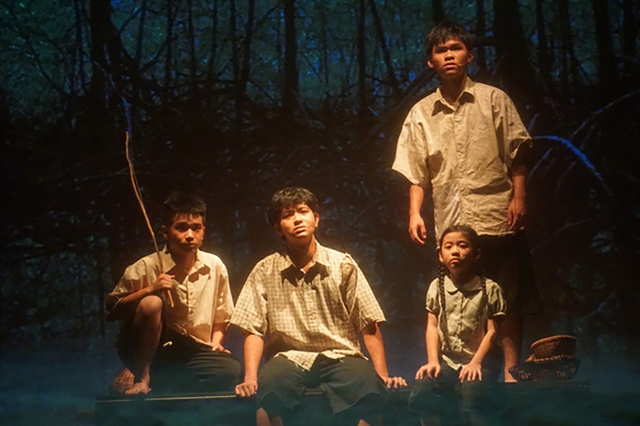
Young actors take part in performance skills courses launched by People’s Artist Thanh Tuấn, who has 50 years of experience in 'cải lương' (reformed opera). They are trained in singing, drama, music and dance. Photo courtesy of the artist
HCM CITY — With a desire to contribute to preserving and promoting the cultural values of cải lương (reformed opera), People’s Artist Thanh Tuấn, a veteran actor, has pledged to train new generations in this traditional performance art.
Young artists in HCM City are being encouraged to hone their performance skills taught by the famous artist from HCM City over three and six-month refresher courses for young graduates of art schools and those working for drama troupes and theatres.
The participants have to pass selection rounds held by Tuấn and the theatre’s veteran artists before commencing training.
They will study the history of cải lương singing, music and dance used in the art form before being trained at different performance levels.
The participants will study with professional artists, including Tuấn, traditional musicians and composers like Hoàng Hiệu and Văn Giàu, as well as scriptwriter Văn Ngọc.
They will also get opportunities to perform in leading theatres’ new dramas and comedies.
"For a long time, I have got support from many colleagues and friends to open a company to train potential singers, and I have fulfilled my desire to open the classes to teach young people about the artistic profession according to the vọng cổ (nostalgic tunes) singing methods that I have researched in many decades of my career," said the People's Artist title holder on the Cải Lương Việt Nam website.
“The 100-year-old cải lương is a unique genre of Vietnamese theatre. Further training is required for young performers because the number of professional and talented actors in this art form has declined in recent years.”
To achieve fluency in traditional art genres, including cải lương in the south, chèo (traditional opera) in the north, and tuồng (classical drama) in the centre, it takes four or five years at school and two to five years of working with professional troupes and theatres, according to Tuấn.
“Cải lương is particularly difficult to master. Studying in the school is not enough for young performers to properly know the art. So I decided to offer refresher courses to help them improve their singing and performance skills,” he added.
Tuấn said his training would also help participants learn more about the country’s culture and lifestyle.
Tuấn’s courses for young actors are held every Saturday and Sunday. The fees are VNĐ1 million (US$45) and VNĐ2 million for three- and six-month courses, respectively. The students need at least one year of training to become professionals.
Tuấn has performed in several hundred plays and TV shows and recorded albums featuring both traditional and modern styles of cải lương.
He has worked with Cần Thơ Television, HCM City Television and several film studios to produce TV shows, videos and albums featuring quality performances about various social issues.
Through his productions, Tuấn and his colleagues like People’s Artists Minh Vương and Bạch Tuyết have won the hearts of people living in remote areas who enjoy theatre via TV or radio.
He has also worked with performing art schools and traditional theatres to train students.
“Young actors should be more confident. They should forge their own way after learning from older generations,” said young actor Minh Tuấn of Trần Hữu Trang Cải Lương Theatre. "I have to study and work hard to demonstrate my own personal style on stage.”
Reformed opera originated in the southern region in the early 20th century and blossomed in the 1930s as a theatrical form for the middle class during the country's French colonial period.
Blending Vietnamese folk songs, classical music, classical theatre and modern spoken drama, the unique performance art of cải lương is now promoted as a national theatrical form.
According to cultural researcher Vương Hồng Sển, the first notable introduction of cải lương in Vietnamese popular culture was the premiere of Gia Long Tẩu Quốc, a play about the first emperor of the Nguyễn Dynasty, at a theatre in Sài Gòn (now Hồ Chí Minh City) on November 16, 1918.
A Google Doodle once also honoured cải lương as a blend of traditional and contemporary influences, saying it combines opera with spoken drama to create a vibrant expression of Vietnamese culture and identity.
Cải lương is known for evolving from the traditional Vietnamese opera of hát bội (classical drama) from Việt Nam's Mekong Delta.
One of the most iconic cải lương productions is Tiếng Trống Mê Linh (The Drum Sound of Mê Linh). The historical play tells the story of Trưng Trắc and Trưng Nhị, two sisters who lead the fight for Vietnamese independence from the Chinese Southern Han domination in the first century. VNS
OVietnam